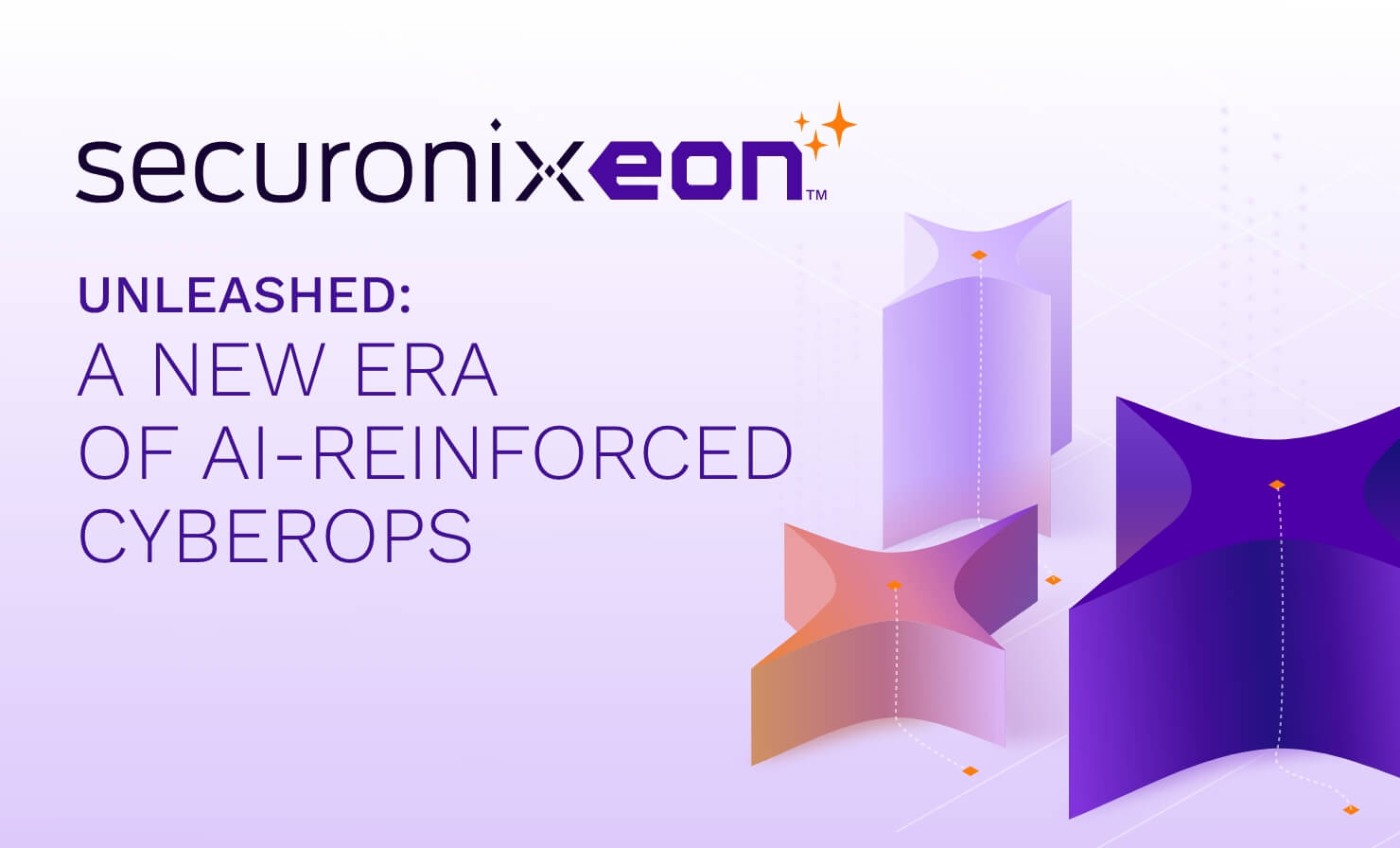- Why Securonix?
- Products
-
- Overview
- 'Bring Your Own' Deployment Models
-
- Products
-
- Solutions
-
- Monitoring the Cloud
- Cloud Security Monitoring
- Gain visibility to detect and respond to cloud threats.
- Amazon Web Services
- Achieve faster response to threats across AWS.
- Google Cloud Platform
- Improve detection and response across GCP.
- Microsoft Azure
- Expand security monitoring across Azure services.
- Microsoft 365
- Benefit from detection and response on Office 365.
-
- Featured Use Case
- Insider Threat
- Monitor and mitigate malicious and negligent users.
- NDR
- Analyze network events to detect and respond to advanced threats.
- EMR Monitoring
- Increase patient data privacy and prevent data snooping.
- MITRE ATT&CK
- Align alerts and analytics to the MITRE ATT&CK framework.
-
- Resources
- Partners
- Company
- Blog
SIEM, SOAR
Security teams continue to be overwhelmed by a constant barrage of alerts due to the evolving threat landscape and lack of resourcing. Manually sifting through these alerts to identify and contain threats is a time-consuming and error-prone process. Enter SOAR (Security Orchestration, Automation, and Response), a powerful tool designed to streamline security operations, accelerate response times, and boost security team efficiency.
What is SOAR?
SOAR is a cybersecurity technology that helps organizations improve their security posture by automating and orchestrating security workflows. It stands for Security Orchestration, Automation, and Response. Let’s look at what each component of SOAR stand for:
- Security Orchestration: SOAR streamlines security operations by automating workflows between different security tools. This eliminates the need for manual handoffs and ensures a more efficient incident response process.
- Security Automation: SOAR automates repetitive tasks such as threat investigation, log analysis, and incident ticketing. This frees up your security analysts to focus on more complex tasks that require human expertise.
- Security Response: SOAR provides tools to improve your security team’s ability to respond to incidents. This includes features like case management, playbooks (predefined workflows for specific threat types), and automated remediation actions.
How Does SOAR Work?
A typical SOAR solution consists of the following components:
- Data ingestion: A modern SOAR collects data from various sources like security tools, network devices, endpoints, user behaviors and cloud telemetry and feeds it into a central repository.
- Alert processing: SOAR automatically analyzes incoming alerts to determine their severity and potential risk.
- Orchestration: SOAR orchestrates the response to an incident by automatically triggering predefined workflows or playbook actions across different security tools.
- Automation: SOAR automates repetitive tasks such as threat investigation and report generation.
- Reporting: SOAR provides comprehensive reporting on security incidents and trends.
Benefits of SOAR
SOAR offers numerous benefits to organizations of all sizes. By integrating SOAR into your security operations, you can:
- Improve your incident response: SOAR helps you detect and respond to threats more quickly and effectively.
- Reduce the burden on your security team: SOAR automates routine tasks, freeing up your security team to focus on more strategic initiatives.
- Improve your security posture: SOAR helps you identify and address vulnerabilities in your security environment.
- Reduce costs: SOAR can help you reduce the costs associated with security incidents and compliance violations.
Here are some specific benefits of SOAR:
- Faster incident response: SOAR can help you reduce your Mean Time to Respond (MTTR) by automating common incident response tasks, such as isolating infected systems, containing threats, and restoring systems.
- Improved security team efficiency: SOAR can help your security team work more efficiently by streamlining workflows, reducing the need for manual intervention, and providing a centralized platform for managing security operations.
- Enhanced threat detection: SOAR can help you detect threats that may be missed by traditional security tools, such as advanced persistent threats (APTs) and insider threats.
- Reduced risk: SOAR can help you reduce your risk of data breaches and other security incidents.
SOAR Capabilities and Use Cases
SOAR offers a wide range of capabilities to help you streamline your security operations and improve your incident response. Some of the key capabilities include:
- Case management: Create and manage cases for each incident, tracking all relevant information and activities, including alerts, investigations, and remediation actions.
- Incident response: Automate common incident response tasks, such as isolating infected systems, containing threats, and restoring systems.
- Threat intelligence gathering: Collect and analyze threat intelligence to identify emerging threats and improve your security posture.
- Automation: Automate routine tasks, such as generating reports, updating security configurations, and patching systems.
- Orchestration: Coordinate workflows between different security tools to improve efficiency and reduce response times.
SOAR can be used to address a variety of security challenges, including:
- Phishing attacks: Detect and respond to phishing attacks before they cause damage.
- Malware outbreaks: Contain malware outbreaks and prevent further spread.
- Insider threats: Identify and investigate suspicious activity by insiders.
- Data breaches: Respond to data breaches and minimize the impact on your organization.
- Compliance violations: Ensure compliance with industry regulations and standards.
SOAR vs. SIEM
SOAR (Security Orchestration, Automation, and Response) AND (SIEM (Security Information and Event Management) are both vital components of a robust cybersecurity strategy, but they serve distinct purposes. SIEM focuses on gathering, analyzing, and correlating vast amounts of security data from various sources, offering a centralized platform for monitoring potential threats across an organization’s infrastructure. This comprehensive visibility into security events enables teams to asses risks and detect anomalies.
SOAR, on the other hand, builds on the data collected by SIEM, taking it a step further by automating and orchestrating incident response actions. Instead of simply monitoring threats, SOAR enables organizations to respond quickly and efficiently by automating workflows, reducing the need for manual intervention, and streamlining remediation efforts.
Although they serve different functions, SOAR and SIEM complement each other. SIEM provides critical data and analysis, while SOAR turns those insights into actionable responses, helping organizations contain and mitigate threats in real time. Together, they form a powerful integrated cybersecurity solution that enhances both detection and response capabilities.
How to Integrate SOAR into Your Company
Integrating SOAR into your company requires careful planning and execution. Here are some steps to follow:
- Assess your needs: Determine what you hope to achieve with SOAR and identify your key use cases. Consider factors such as your organization’s size, complexity, and specific security challenges.
- Choose a SOAR solution: Evaluate different SOAR solutions based on your needs, budget, and compatibility with your existing security infrastructure.
- Implement the SOAR solution: Deploy the SOAR solution and integrate it with your existing security tools. This may involve data migration, configuration, and testing.
- Train your staff: Train your security team on how to use SOAR effectively. This includes providing training on the SOAR interface, workflows, and best practices.
- Monitor and optimize: Continuously monitor the performance of SOAR and make adjustments as needed. This includes reviewing incident response times, identifying areas for improvement, and updating playbooks and workflows.
SOAR is a powerful tool that can help you streamline your security operations, improve your incident response, and reduce your risk. By integrating SOAR into your company, you can take control of your security posture and protect your organization from cyber threats.
If you would like to learn more about how Securonix can help your organization identify and remediate threats with 10x precision, speed and efficacy, check out our website or book a demo today!






